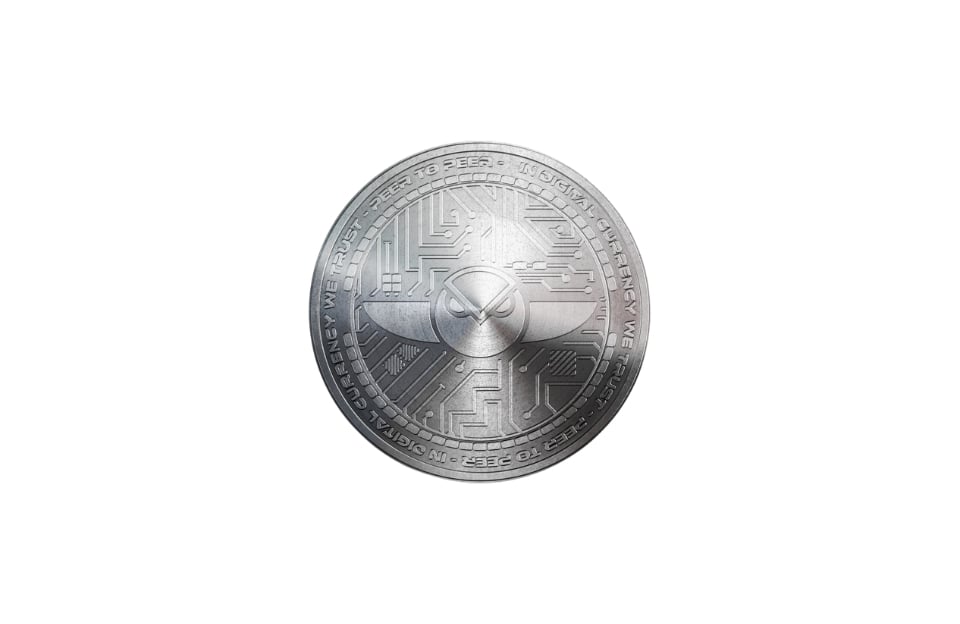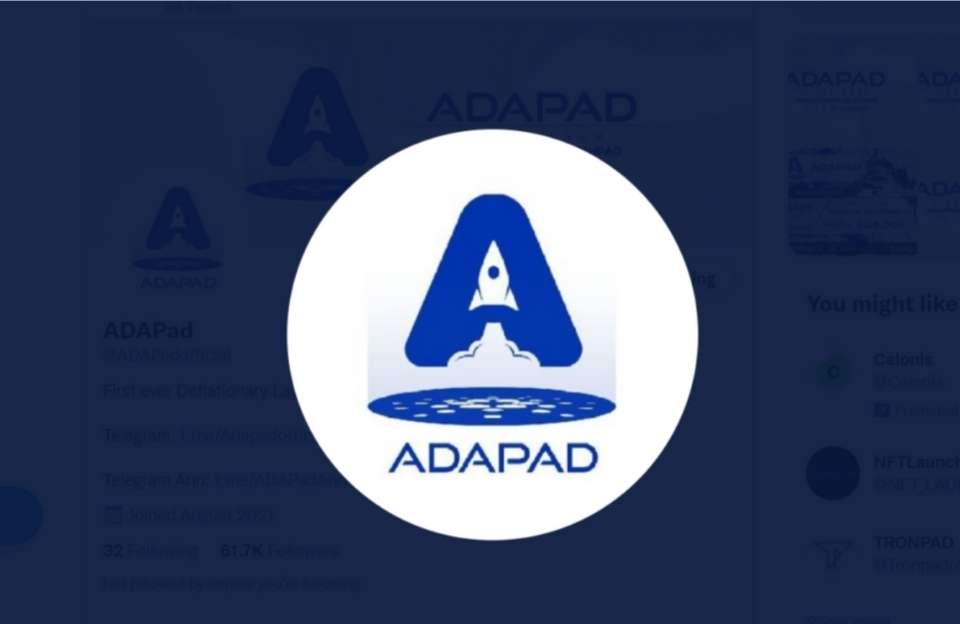What is Chainlink (LINK)?
Luis Clark
- Home
- /
- Cryptocurrencies
- /
- What is Chainlink (LINK)?
Luis Clark
What is Chainlink (LINK)?
Chainlink is a decentralized Oracle network that supports the building, accessing, and selling of all Oracle services required to power hybrid smart contracts on any blockchain technology. It enables smart contracts to connect to any external API and take advantage of off-chain data computations that foster feature-rich applications. Simply put, Chainlink connects blockchain-based smart contracts with the outside world. Popular DeFi protocols like crypto.com, Aave, and yearn.finance depend on Chainlink for providing off-chain data.
LINK is the native token of the Chainlink network and it is used to pay for services on the platform.

Who is the Founder?
Chainlink began with a whitepaper which was published by Sergey Nazarov, Steve Ellis, and Ari Juels in September 2017. To manage its technology, a Fintech brand, based in the Cayman Islands called SmartContract Chainlink Ltd. was founded. Sergey Nazarov is the CEO of the company. In addition, a global research and development team came together under the name ChainlinkLabs to further help develop Chainlink’s technology.
How does Chainlink (LINK) Work?
Chainlink utilizes a decentralized oracle network (decentralized nodes) to provide off-chain data to the Chainlink platform. The purpose of the network’s structure is to eliminate trust issues and aims to gather data as reliably and accurately as feasible.
The Chainlink network process begins with smart contracts requesting data from the network. This is called a Requesting Contract. In response, the Chainlink protocol formulates a Service Level Agreement (SLA), which hosts 3 different smart contracts:
Reputation Contract
All nodes are assigned a reputation score. To do so, the reputation contract analyzes a node’s track record to verify both its performance history and authenticity. If a node is found to be unreliable or disreputable it is sorted out and ineligible for the data request.
Order Matching Contract
This smart contract delivers data requests to Chainlink nodes. The nodes then place bids to be chosen to provide the requested data. Next, the contract picks the appropriate number of nodes (from the pool of bidders) who have been proven reliable and capable to provide accurate data. There’s also an alternative where users request particular nodes to provide the data feeds needed.
Aggregating Contract
After the chosen nodes have received their requested external data feeds, the Chainlink network translates the data into on-blockchain language. At this point, the aggregating contract validates the received data from every single source and compares it with multiple sources. It can remove false answers and returns the weighted result using the sum of every data received.
By the above approach, Chainlink efficiently sends trustworthy and accurate real-world or off-chain data to smart contracts.
Key Features of Chainlink (LINK)
Chainlink Verifiable Random Function (VRF)

Chainlink Verifiable Random Function is a verifiable Random Number Generator (RNG) that allows smart contracts to access random values without compromising usability or security. In simple terms, Chainlink VRF provides cryptographically secure randomness for blockchain-based applications.
Developers can use Chainlink VRF to build reliable blockchain-based smart contracts for applications that rely on unpredictable outcomes. This includes; Building blockchain games and NFTs, choosing a representative sample for consensus mechanisms, and random assignments for resources and duties such as randomly assigning judges to cases.
For each request, Chainlink VRF generates random values and cryptographic proof of how the values were determined. The Proof is then published and verified on-chain before any applications can use it. This is done to prevent the results from being manipulated or tampered with by any single entity including users, oracle operators, smart contract developers, and miners.
Users can request randomness using 2 methods: Direct Funding and subscription.
- Direct Funding
Under this method, consuming smart contracts directly pay with LINK only when they request random values. To be able to use this method, the user must fund his consumer smart contracts. This is to ensure that there are enough LINK tokens to pay for random requests made by the smart contracts. - Subscription
Users can create a subscription account for their smart contracts and fund it with LINK tokens. One subscription account can be connected with multiple consuming smart contracts. When the consuming smart contracts request randomness, the requests are fulfilled and the transaction costs are calculated and deducted from the smart contracts subscription balance.
The subscription method is perfect for users whose use case requires regular requests for randomness as this will reduce the overall cost and simplify funding.
The subscription method is also perfect for users who have several VRF-consuming smart contracts, as it gives control over the maximum gas price for requests and reduces gas overhead.
Currently, Chainlink VRF is available on the following networks: Ethereum (Mainnet and Goerli testnet), Avalanche ( Avalanche Mainnet and Avalanche Fuji Testnet), Polygon (Mainnet and Mumbai Testnet), BNB Chain (Testnet and Mainnet), Fantom (Fantom Mainnet and Fantom Testnet)
AWS ChainLink Quickstart
AWS Chainlink Quickstart is a Chainlink special workflow that gives data providers a single gateway to all blockchains. Chainlink’s node operators and new enterprises and DevOps can join the Chainlink ecosystem to build support for new oracle jobs using AWS Chainlink Quickstart.
The Chainlink AWS framework easily maps a data provider’s API directly to a Chainlink node. This enables them to cryptographically sign in their data, broadcast the data to other blockchains, and sell the data directly to smart contracts. With this framework, data providers can expand their blockchain ecosystems, improve the reliability of their data through new data signing capabilities and also earn additional revenue streams on their API.
The AWS Chainlink Quickstart is designed to reduce the manual procedure involved in the deployment of a Chainlink node into just a few steps. The result of this is an available and secure production Chainlink node environment that can be easily accessed in just a few minutes by users.
When the AWS Chainlink Quickstart is deployed, an Amazon virtual private cloud that is configured with both private and public subnets is created in the Chainlink node environment.
The private subnets contain the following:
- An Amazon Relational Database Service PostgreSQL managed database instance
- Two Chainlink nodes in the Auto Scaling group
- Security groups dedicated to fine-grained inbound access control
The public subnet contains:
- A Linux bastion host in an Auto Scaling group. This is to allow inbound Secure Shell access to Amazon Elastic Compute Cloud instances on both private and public subnets.
- Managed network address translation. This will allow outbound access for the Chainlink node instances in the private subnets.
- An internet gateway to allow access to the internet
Other Chainlink node environments built in the AWS Cloud include:
- Amazon CloudWatch logging of Chainlink node activity
- AWS Key Management Service for Customer managed keys for resources and AWS-managed keys.
- An Elastic Load Balancing (ELB) for accessing the Chainlink node web graphical user interface
- AWS Secrets Manager. This is used to store and protect Chainlink node credentials.
- An available architecture that spans 2 Availability Zones.
Weaknesses of Chainlink (LINK)
A major weakness of Chainlink is the slow development speed of Chainlink’s solution to the problems of financial transactions. Investors do not know how long it will take for Chainlink to implement an actual working solution to the problems affecting the execution of financial transactions as Chainlink has not officially released a roadmap that investors can use as a guide.
The lack of a suitable roadmap has made some investors question the guarantee of a long and fruitful partnership between them and Chainlink.
Also, Chainlink’s oracle network is still limited. The network has just about 332 nodes. This is quite small when compared to what its competitors have. Ethereum for instance has over 1,000 nodes.
Even though Chainlink runs an active bug bounty program and has not suffered from any bugs, the fact that the LINK token runs on Ethereum is a problem. LINK is an ERC-677 token and this makes it vulnerable to any bugs or issues that affect Ethereum.
How is Chainlink (LINK) Created?
LINK has a fixed maximum supply of 1 billion tokens. 55% of these tokens are held by its founding organization and 35% of the tokens were sold in its 2017 ICO.
That said, LINK does not mint new tokens nor can it be mined as it has a fixed and unchangeable supply.
Mining Chainlink (LINK)
Chainlink is a Proof of Stake coin. This means that you cannot mine it as you would Proof of Work coins like Bitcoin or Ethereum. Rather, you can earn rewards and secure the Chainlink network by staking your Chainlink tokens or operating a node.
That said, staking with Chainlink doesn’t work anything as it does with other Proof of Stake coins or tokens. There’s a bit more work involved than holding coins in a wallet.
Here’s how this works: Chainlink node operators can take jobs to retrieve and provide requested data to smart contracts and get rewarded. LINK tokens are used to pay node operators. The reward is decided by the creator of the smart contract and varies depending on the type of job requested.
Now, Chainlink will require node operators to put up LINK as collateral before accepting a job to make sure that the node operator provides the right data during the timeframe of the smart contract without any downtime. If those requirements are not satisfied the node operator will forfeit the collateral as a penalty. So the concept of Chainlink’s staking is to deposit LINK tokens to a node to undertake jobs that need collateral.
Which Blockchain does Chainlink (LINK) Use?
The decentralized Oracle Network, Chainlink, uses the Ethereum blockchain technology. Also, Chainlink’s native token, LINK, is an ERC677 token which is an extension of the ERC-20.
How to Use Chainlink (LINK)?
LINK is the native token of the Chainlink blockchain. LINK is an ERC-20 token that has an extra ERC-223 function known as “transfer and call”. This function facilitates interaction with smart contracts. The more LINK tokens a node holds, the more power the node has within the PoS network.
LINK is a utility token that can be traded on crypto exchanges. It is used to reward nodes for the validating of transactions and also used to incentivize data accuracy.
Chainlink node operators can stake LINK to bid on the intended buyer of data. LINK is also used to pay node operators. This reward is for holding the token as owning more tokens gives access to bigger and more rewarding Chainlink smart contracts.
LINK is also used to discourage node operators from getting involved in malicious activities that can harm Chainlink. Node operators who break the rules lose access to their LINK tokens.
Chainlink’s Reputation Contract relies on LINK tokens to determine which nodes should be employed for fulfilling smart contract requests. The size of the LINK token staked by a node is one of the factors considered when choosing a node. Nodes with greater stakes are more likely to be chosen to fulfill Chainlink smart contracts requests.
How to Buy Chainlink (LINK)?

LINK is available on major exchanges like Kraken, Coinbase, Gemini, Binance, Huobi, and OKEx. For a comprehensive list of all the exchanges that support the trading of LINK check CoinMarketCap.
In order to purchase LINK on any of these exchanges, you’ll have to make an account and get it verified. After your account is confirmed, you can deposit regular money into your account and use it to buy the desired number of LINK tokens from the exchange.
How to Store Chainlink (LINK)?
Since Chainlink is an ERC-20 token, it can be stored in any wallet that supports such tokens. Wallets like Atomic Wallet, MetaMask wallet, Trust Wallet, Bread wallet, and Coinbase wallet support the storage of LINK.
Hardware wallets like Ledger Nano S, Ledger Nano X, and Trezor Model T also support the storage of LINK tokens. Also, hardware wallets are the best wallets for storing a large number of cryptocurrencies because they are more secure and less susceptible to malicious attacks.
Best Place to Stake Chainlink (LINK)?

There are only 2 ways you can stake your LINK tokens. The first is by running a personal node, depositing LINK on your node, and then accepting data request jobs. The second is by joining staking pools where several individuals combine their LINK tokens on a node that is managed for them by the staking pool. There are advantages and disadvantages to both methods but it’s left to you to choose the best option for yourself.
What You Need to Know About the Future of Chainlink (LINK)
Chainlink intends to keep growing by broadening its support for blockchain-based smart contract networks and facilitating enhanced use cases of smart contracts. Also, since massive stores of data and records aren’t yet managed within blockchain environments, Chainlink could have numerous opportunities to link blockchain networks with off-chain or real-world data.
Conclusion: Should You Put Your Money in Chainlink (LINK)?
Chainlink offers an amazing investment opportunity. The Chainlink decentralized Oracle network offers value that’s yet to be successfully matched by its competition in the crypto space. That said, you should only put your money into the project if you believe that the Chainlink network will maintain its technological lead in the smart contract data niche in the coming years.
Risks in Investing in Chainlink (LINK)
LINK like any other cryptocurrency is volatile and primarily depends on the success of the Chainlink network. This means that the price value of the coin can drop significantly very quickly. So only invest what you’re willing to lose in the worst-case scenario.
FAQ
Most frequent questions and answers
LINK the native token of the Chainlink network does not have its blockchain. Rather, it is on the Ethereum blockchain.
The Chainlink decentralized Oracle network can connect several types of data (including real-world data) with any blockchain. This creates numerous potential possibilities for Chainlink.
The Chainlink decentralized oracle network is developed on Ethereum.
Ethereum coins can be used in making purchases, incentivizing miners for securing and operating the Ethereum network, and facilitating smart contracts. However, Chainlink tokens have one primary purpose which is paying node operators within the network.
The 3 major competitors of Chainlink include Nest Protocol and API3, Band Protocol, and UMA. These are all Oracle networks battling for integration and partnerships. However, Chainlink is in the lead as it possesses more integrations and partnerships than the other options.
Yes, Chainlink is a DeFi Coin.
Projects like AWS, Oracle, Google Cloud, Hedera Hashgraph, Dapps Inc, and SWIFT have partnered with Chainlink.
Chainlink makes money primarily from token sales.
Yes, Chainlink is partnered with Google Cloud.
Yes, Chainlink’s Data Feed can be used on the Solana network to link your smart contracts to real-world data.
Yes, Chainlink is a decentralized network of nodes that provides real-world data to blockchain smart contracts through oracles. This process cuts out the dependability of a single centralized source. Chainlink ensures that the requirements of each smart contract are met in a way that is independent of the smart contract stakeholders. This is done by connecting the smart contract directly to the real-world data requested.
Skrumble.com provides all its content for informational purposes only, and this should not be taken as financial advice to buy, trade, or sell any investment instruments or products, including but not limited to cryptocurrencies, or use any specific exchange. Please do not use this website as investment advice, financial advice, or legal advice, and each individual’s needs may vary from that of the author. Investing in financial instruments, including cryptocurrencies, carries a high risk and is not suitable for all investors. It is possible to lose the entire initial investment, so do not invest what you cannot afford to lose. We strongly advise conducting your own research before making any investment decisions. This post includes affiliate links with our partners who may compensate us.
To view our privacy policy read here.






